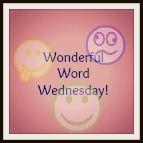I decided to give it a try. The following are the original text I used and my attempts at Found Poetry:
From Shoeless Joe by W.P. Kinsella
The process is all so slow, as dreams are slow, as dreams suspend time like a balloon hung in midair. I want it all to happen now. I want the catcher to appear. I want whatever miracle I am party to, to prosper and grow: I want the dimensions of time that have been loosened from their foundation to entwine like a basketful of bright embroidery threads. But it seems that even for dreams, I have to work and wait. It hardly seems fair.
Dreams
So s-l-o-w...
Dreams... are… slow
suspends
Time like a balloon hung in midair
For the dimensions of time to entwine
I have to work... and... wait
So s-l-o-w…
Dreams
From the Summer of the Gypsy Moth by Sara Pennypacker.
I like to imagine the ties between us as spider silk: practically invisible, maybe, but strong as steel. I figure the trick is to spin out enough of them to weave ourselves into a net.
Ties between us…
Like strands of spider silk,
Invisible but strong.
Strong as steel.
Weaved into a net.
I hope you feel inspired to try Found Poetry. If so feel free to share your attempts.





